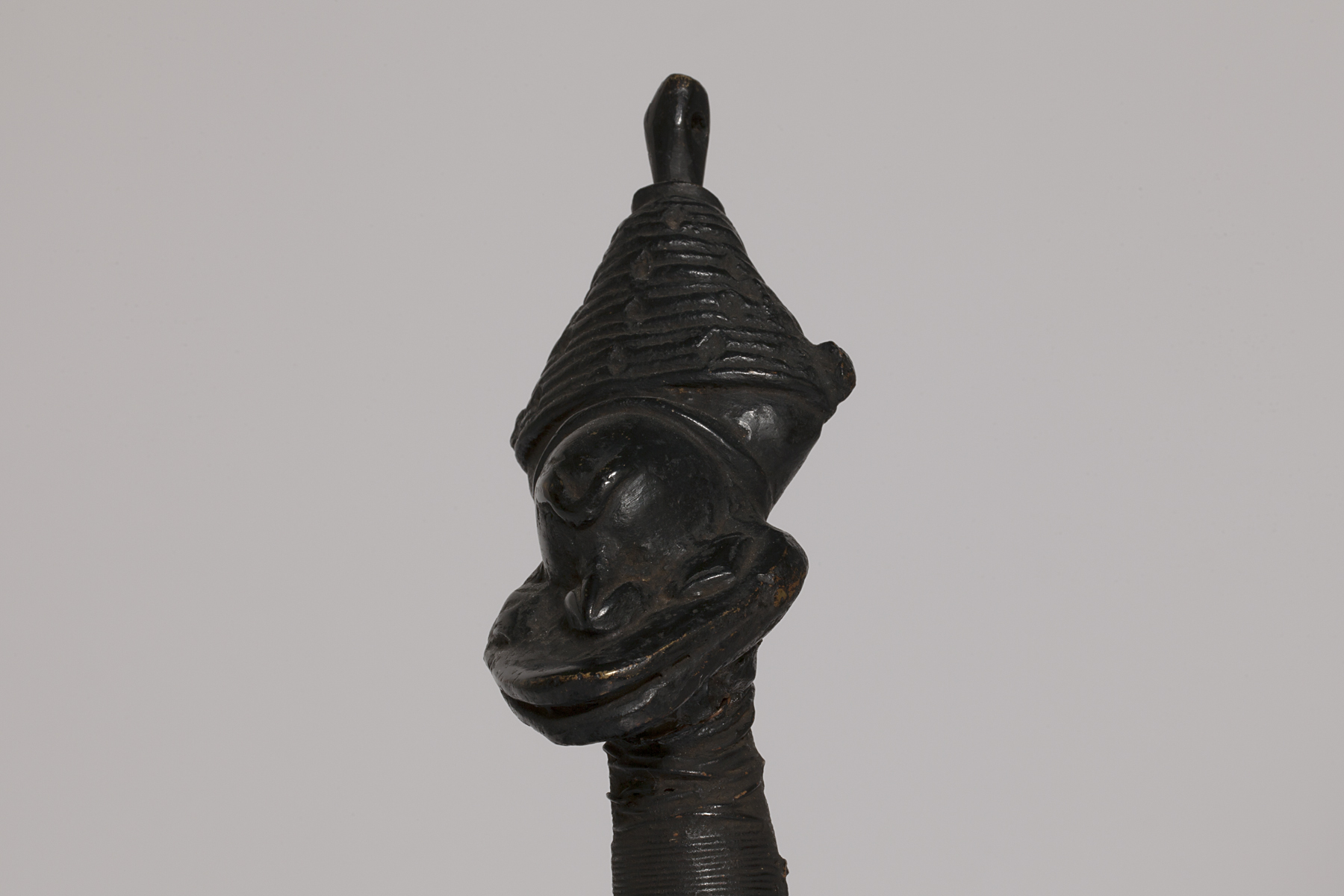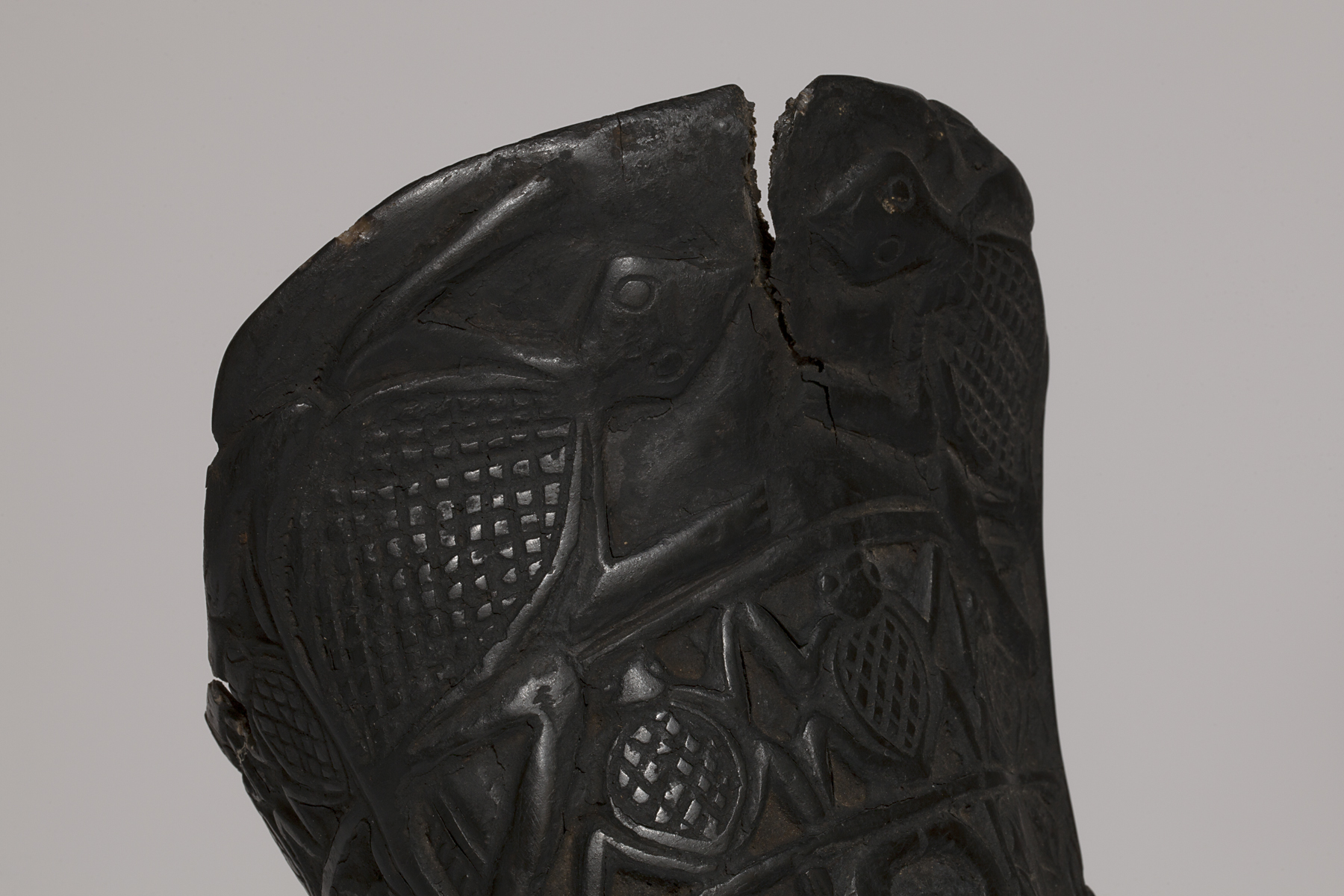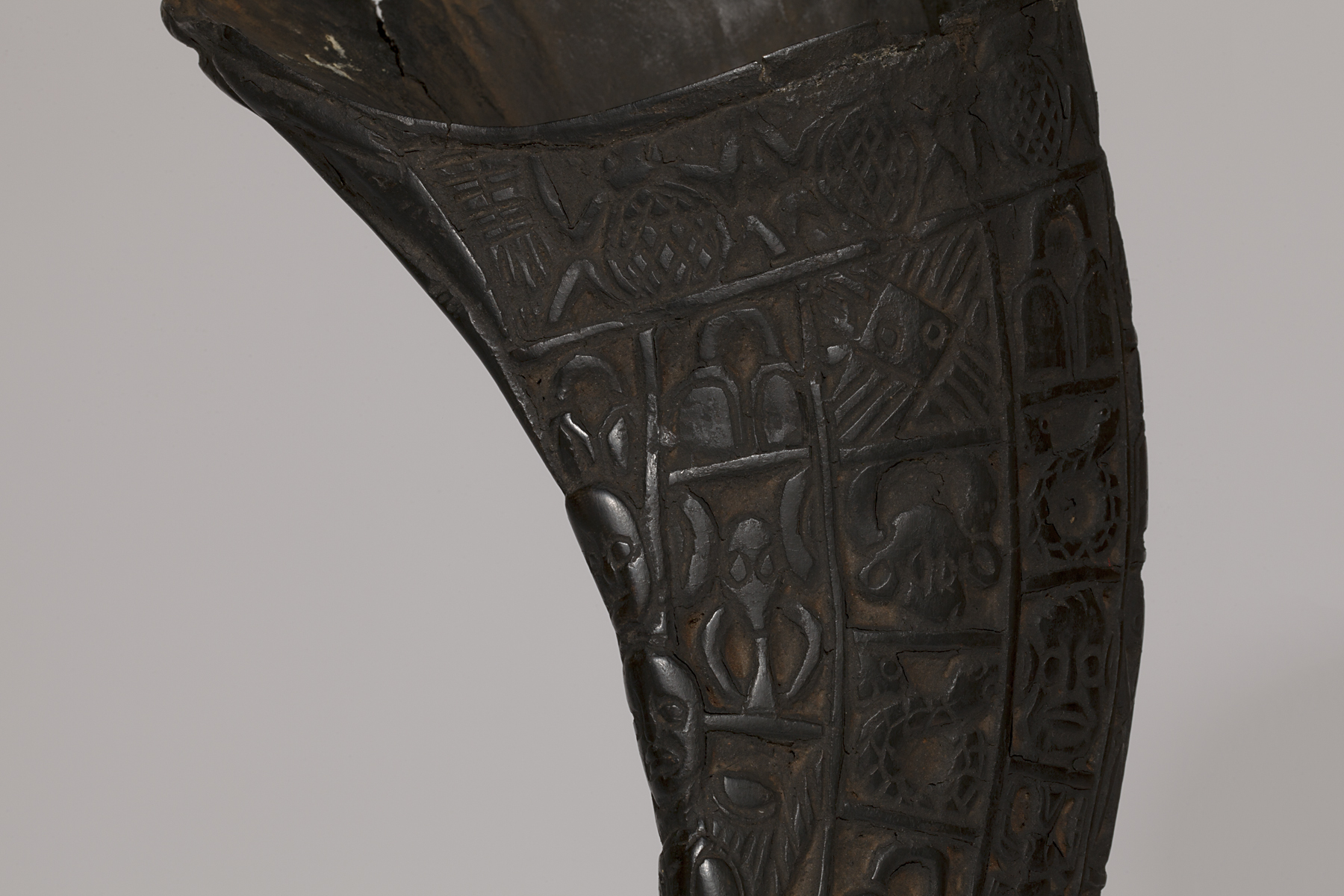carved drinking horn, unrecorded Bamum artist
Artwork Overview
unrecorded Bamum artist, artist
carved drinking horn,
late 1800s–1940
Where object was made: Cameroon
Material/technique: buffalo horn; carving
Dimensions:
Object Length/Width/Depth (Length x Width x Depth): 41 x 12 x 13 cm
Object Length/Width/Depth (Length x Width x Depth): 4 3/4 x 16 1/8 x 5 1/8 in
Object Length/Width/Depth (Length x Width x Depth): 41 x 12 x 13 cm
Object Length/Width/Depth (Length x Width x Depth): 4 3/4 x 16 1/8 x 5 1/8 in
Credit line: Gift of Larry W. Welling
Accession number: 2007.0274
Not on display
If you wish to reproduce this image, please submit an image request







